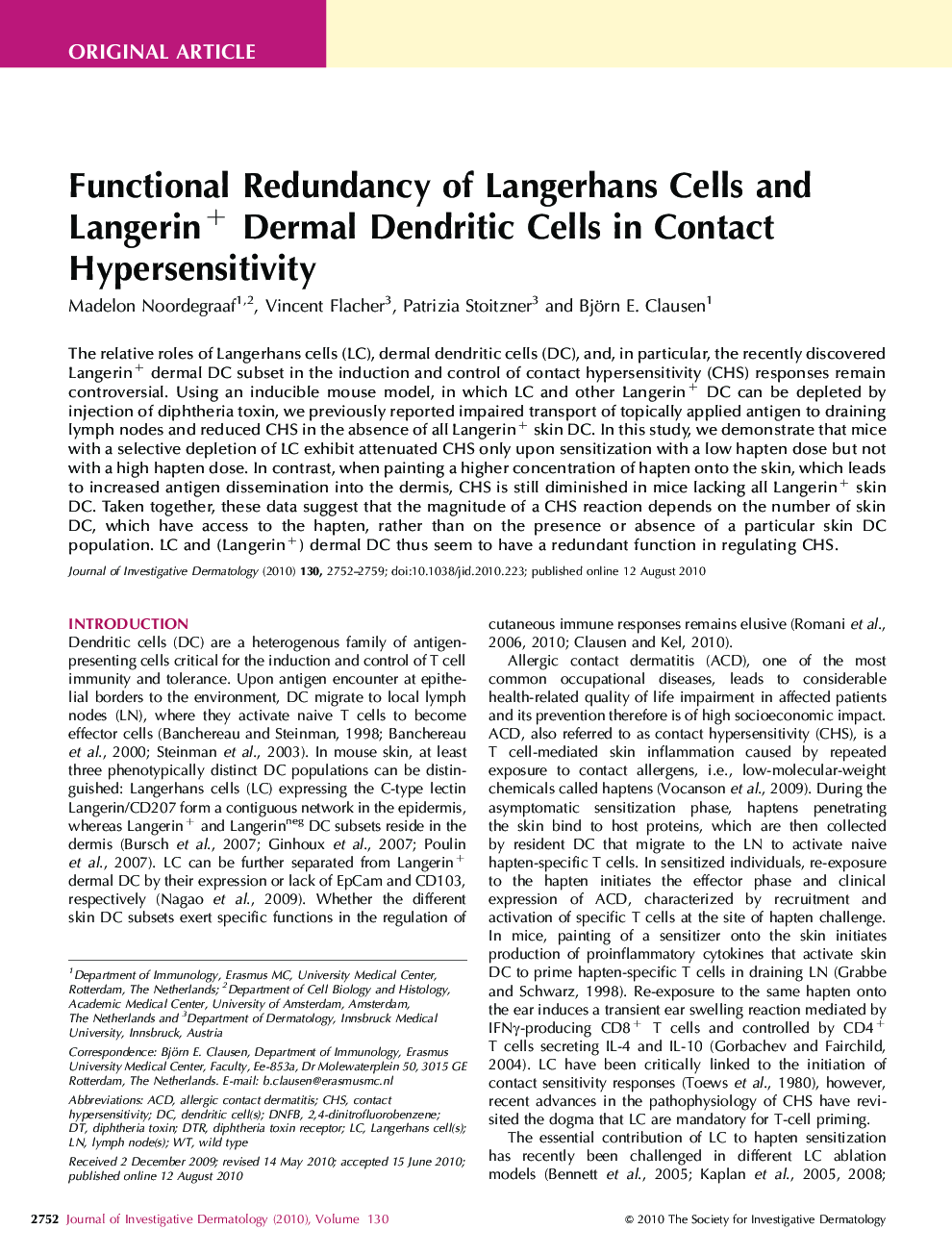| Article ID | Journal | Published Year | Pages | File Type |
|---|---|---|---|---|
| 3215811 | Journal of Investigative Dermatology | 2010 | 8 Pages |
The relative roles of Langerhans cells (LC), dermal dendritic cells (DC), and, in particular, the recently discovered Langerin+ dermal DC subset in the induction and control of contact hypersensitivity (CHS) responses remain controversial. Using an inducible mouse model, in which LC and other Langerin+ DC can be depleted by injection of diphtheria toxin, we previously reported impaired transport of topically applied antigen to draining lymph nodes and reduced CHS in the absence of all Langerin+ skin DC. In this study, we demonstrate that mice with a selective depletion of LC exhibit attenuated CHS only upon sensitization with a low hapten dose but not with a high hapten dose. In contrast, when painting a higher concentration of hapten onto the skin, which leads to increased antigen dissemination into the dermis, CHS is still diminished in mice lacking all Langerin+ skin DC. Taken together, these data suggest that the magnitude of a CHS reaction depends on the number of skin DC, which have access to the hapten, rather than on the presence or absence of a particular skin DC population. LC and (Langerin+) dermal DC thus seem to have a redundant function in regulating CHS.
